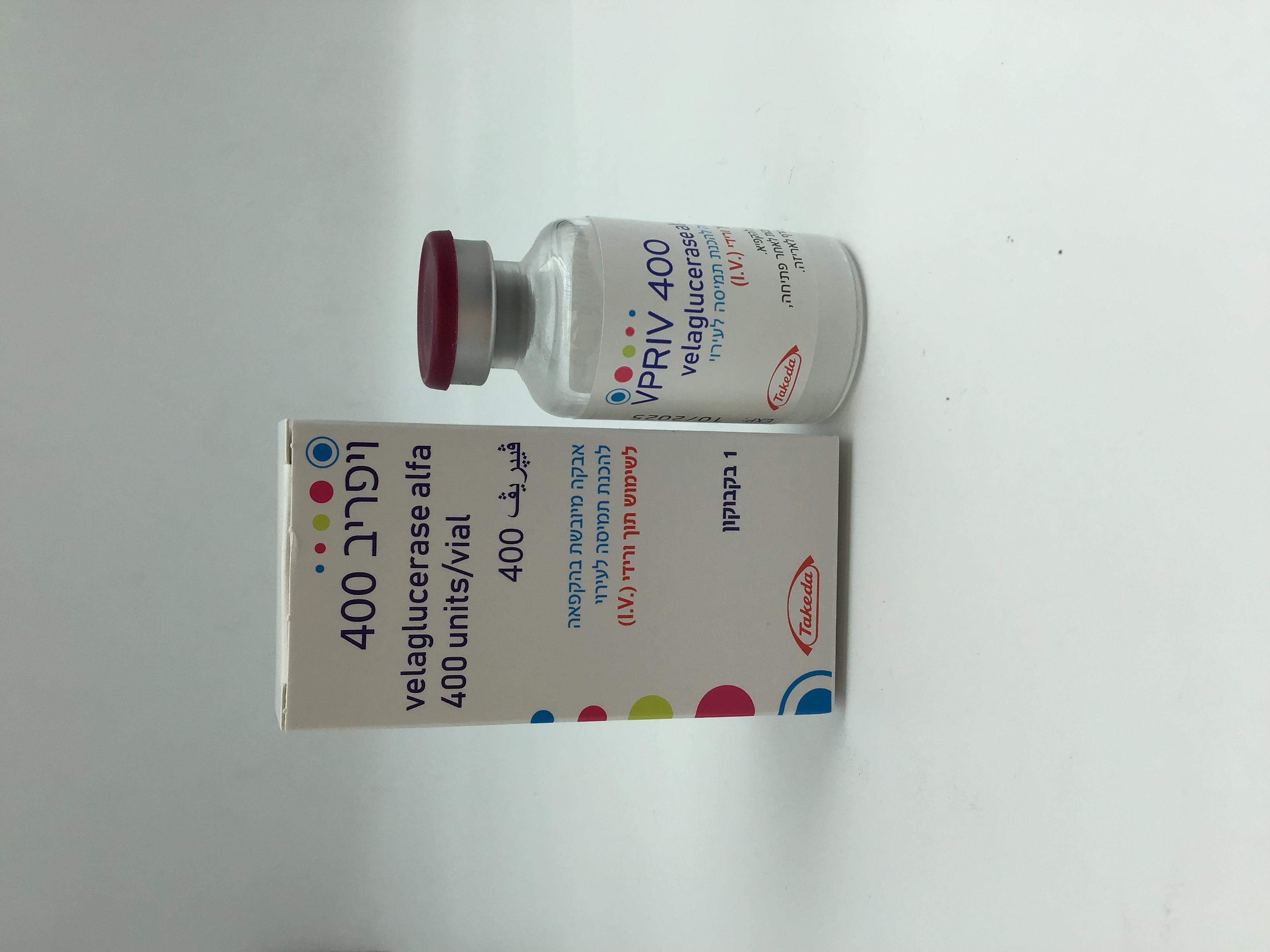Quest for the right Drug

ויפריב 400 VPRIV 400 (VELAGLUCERASE ALFA)
תרופה במרשם
תרופה בסל
נרקוטיקה
ציטוטוקסיקה
צורת מתן:
תוך-ורידי : I.V
צורת מינון:
אין פרטים : LYOPHILIZED POWDER FOR SOLUTION FOR INFUSION
עלון לרופא
מינוניםPosology התוויות
Indications תופעות לוואי
Adverse reactions התוויות נגד
Contraindications אינטראקציות
Interactions מינון יתר
Overdose הריון/הנקה
Pregnancy & Lactation אוכלוסיות מיוחדות
Special populations תכונות פרמקולוגיות
Pharmacological properties מידע רוקחי
Pharmaceutical particulars אזהרת שימוש
Special Warning עלון לרופא
Physicians Leaflet
Special Warning : אזהרת שימוש
4.4 Special warnings and precautions for use Traceability In order to improve the traceability of biological medicinal products, the name and batch number of the administered medicinal product should be clearly recorded. Hypersensitivity Hypersensitivity reactions, including symptoms consistent with anaphylaxis, have been reported in patients in clinical studies and in post-marketing experience. The majority of hypersensitivity reactions usually occur up to 12 hours post infusion. The most frequently reported symptoms of hypersensitivity include nausea, rash dyspnoea, back pain, chest discomfort (including chest tightness), urticaria, arthralgia, and headache. Infusion-related reactions An infusion-related reaction is defined as any adverse drug reaction occurring within 24 hours after the initiation of velaglucerase alfa infusion. Infusion-related reactions (IRR) were the most commonly observed adverse reactions in patients treated in clinical studies. An IRR often appears as a hypersensitivity reaction. The most frequently reported symptoms of hypersensitivity include nausea, rash, dyspnoea, back pain, chest discomfort (including chest tightness), urticaria, arthralgia, and headache. Symptoms consistent with anaphylaxis have been reported in patients in clinical studies and in post-marketing experience. Apart from symptoms associated with hypersensitivity reactions IRRs might show as fatigue, dizziness, pyrexia, blood pressure increase, pruritus, vision blurred, or vomiting. In treatment-naïve patients, the majority of infusion-related reactions occurred during the first 6 months of treatment. Prevention and management of infusion related reactions including hypersensitivity reactions The management of infusion-related reactions should be based on the severity of the reaction, and include slowing the infusion rate, treatment with medicinal products such as antihistamines, antipyretics and/or corticosteroids, and/or stopping and resuming treatment with increased infusion time. Due to the risk for hypersensitivity reactions including anaphylaxis, appropriate medical support, including adequately trained personnel in emergency measures, should be readily available when velaglucerase alfa is administered. If anaphylactic or other acute reactions occur, in the clinic or home setting, immediately discontinue the infusion and initiate appropriate medical treatment. For patients developing anaphylaxis in a home setting it should be considered to continue treatment in a clinical setting. Treatment should be approached with caution in patients who have exhibited symptoms of hypersensitivity to velaglucerase alfa or other enzyme replacement therapy. Pre-treatment with antihistamines and/or corticosteroids may prevent subsequent reactions in those cases where symptomatic treatment was required. Immunogenicity Development of antibodies to velaglucerase alfa may be associated with infusion-related reactions including allergic-type hypersensitivity reactions. In the clinical studies for Marketing Authorization one of 94 (1%) patients developed IgG-class antibodies to velaglucerase alfa. In this one event, the antibodies were determined to be neutralising in an in vitro assay. No patients developed IgE antibodies to velaglucerase alfa. Post-marketing phase During a post marketing extension study, one patient developed IgG antibodies to VPRIV. In addition, a few events of positive neutralising antibodies and lack of effect were reported post marketing. If the physician suspects a lack/loss of effect that may be related to antibody formation the patient may be tested for antibodies at the physician’s discretion. For further information on requesting antibody testing services, please contact medinfoEMEA@takeda.com. Sodium This medicinal product contains 12.15 mg sodium per vial. This is equivalent to 0.6% of the WHO recommended maximum daily intake of 2 g sodium for an adult.
Effects on Driving
4.7 Effects on ability to drive and use machines VPRIV has no or negligible influence on the ability to drive or use machines.

פרטי מסגרת הכללה בסל
התרופה תינתן לטיפול במחלת גושה, מותנה באישור ועדת משרד הבריאות לטיפול בחולי גושה.
שימוש לפי פנקס קופ''ח כללית 1994
לא צוין
תאריך הכללה מקורי בסל
23/01/2011
הגבלות
תרופה מוגבלת לרישום ע'י רופא מומחה או הגבלה אחרת
מידע נוסף
